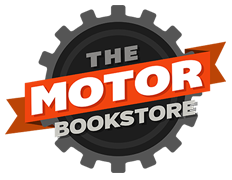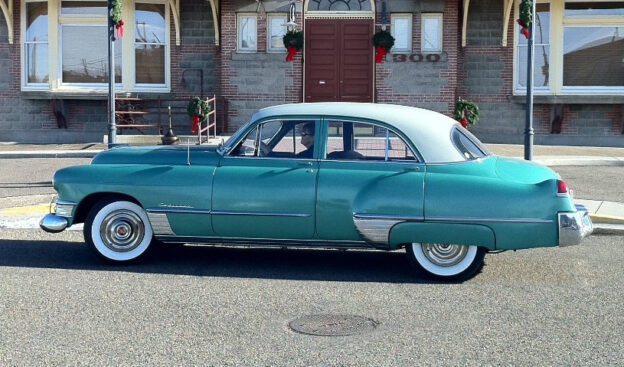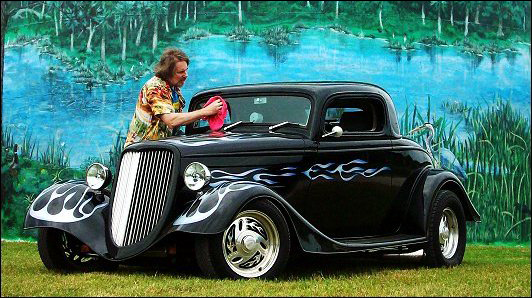
Monthly Archives: February 2023
Car restoration isn’t just for everyday folks. A love of cars is something that stays with you for life – if you end up becoming a famous celebrity, you can take that love to even greater heights. Read on to learn about some of the celebrities who like to restore classic cars as much as any other enthusiast.
Jay Leno
The former “Tonight Show” host is the standard-bearer for the celebrity classic car community. Leno’s collection consists of nearly 300 restored automobiles and motorcycles. It has everything from Doble steam cars to a 1960 Panhard PL 7. He’s also known for his car knowledge, which has led to the TV show “Jay Leno’s Garage” and a regular column in “Popular Mechanics”.
Tim Allen
Known for his role as Tim “the tool man” in “Home Improvement,” Tim Allen has collected a wide variety of both domestic and foreign classic cars over the years. His collection consists mostly of Chevrolets, such as the 1968 Chevy Camaro 427 COPO and the 1962 Chevrolet 409 Bel Air. He also collects several Fords, like the rare 1986 Ford RS200 only sold in the UK. His 1956 Ford F100 was featured in his latest show, “The Last Man Standing.”
Patrick Dempsey
The former “Grey’s Anatomy” star keeps a rotating collection of restored vehicles, which at times has included a 1954 Jaguar XK120, a Porsche 911 GT3 RS, and a 1967 VW Beetle. He even still owns and drives his first car, a 1963 Porsche 356. Dempsey’s love of vehicles led him to become a professional endurance racer in his own right.
Magnus Walker
This British former fashion designer has a great love for vintage Porsche 911s. He has about fifty Porsches total – forty of those being various 911s. He fell in love with the Prosche 911 as a kid and has since purchased and personally modified several 911s solely for the joy of driving them on the open roads.
Jeff Beck
The 8-time Grammy-winning English guitarist is fascinated with American hot rods, especially Ford Deuce Coupes and Roadsters. And unlike many celebrities, he does much of the restoration work himself – and has even built a 1932 Ford Coupe from scratch. At last report, his collection includes 14 hot rods along with several Chevrolet Corvettes.
Jerry Seinfeld
The comedian is known for his love of classic cars and various restored vehicles have been seen in his web series “Comedians in Cars Getting Coffee”. Seinfeld carefully guards his personal life, so we can only guess at the full extent of his collection. But in March 2016, he sold 17 cars, including 15 Porsches, at auction for a total of $22.2 million.
Adam Carolla
The podcast magnate and filmmaker has a collection of more than 20 classic cars, including several Lamborghinis, two former Paul Newman race cars, a Ferrari 330 GT 2+2, an Aston Martin DB9 and a Jaguar XJ-R. He hosted “The Car Show” when it aired on Speed TV, and competes in vintage car races throughout the country.
Wayne Carini
The TV personality started hosting his show “Chassing Classic Cars” in 2008. On the show, he searches throughtout the states for the rarest and neatest classic cars to buy and restore. While he makes a business out of selling the cars he restores, he keeps a private collection of unrestored cars, such as his favorite 1950s Hudson Italia. He also has a particular fascination for Ferraris ever since he first rode in a 1960 Rosso Chiaro 250 SWB.
Interested in car restoration? Read our blog on car restoration and check out our selection of restoration literature to get started on your project.
Should I Paint a Scratch on My Car?
As hard as you try to take care of your car, scratches are seemingly inevitable. Falling tree branches, keys that miss their mark, and bumps from people or luggage can all leave unsightly dings and blemishes on your vehicle. But should you paint a scratch on your car? The Motor Bookstore weighs in below.
The Pros and Cons
The main arguments against painting scratches on a car are that A) it can potentially be expensive and time-consuming, and B) fixing scratches aren’t essential to a car’s performance. After all, if it doesn’t get you where you’re going and faster, then what does it matter? However, we ultimately come out in favor of painting scratches for a few big reasons.
To begin with, even minor scratches will hurt your car’s resale and trade-in value. You may not care about them, but dealerships certainly will. In addition, deep scratches that penetrate the base coat or primer are prime candidates to eventually develop into rust holes. Lastly, many automotive experts agree that scratches can adversely affect your own view of the car – and if you think less of your vehicle, you may be less likely to do important regular maintenance such as oil changes, tire rotations and tune-ups.
Ways to fix scratches
Contrary to popular perception, many minor scratches can be fixed inexpensively in your own garage. Clear coat scratches can often be buffed out in minutes using regular automotive polishing compound, which spreads out the remaining clear coat over the affected area. (Be careful not to overdo it, or you may need to respray some clear coat back on.)
Base coat and primer scratches can take longer to fix, but are far more important to deal with. Many car dealers have touch-up paint or paint pens available for about $10 that do a passable job – just make sure to get the paint code off your vehicle’s compliance plate. You can also do a more professional overnight job using cleaning solvents, matching paint and primer, medium-grade wet sandpaper and polishing compound.
Thinking about doing more work to your vehicle? Check out our other blogs on engine rebuilds and recharging your A/C system.

 Shop Store
Shop Store













